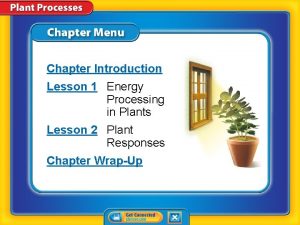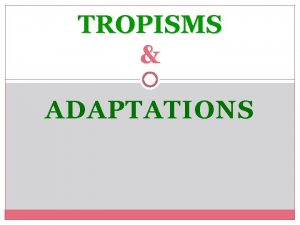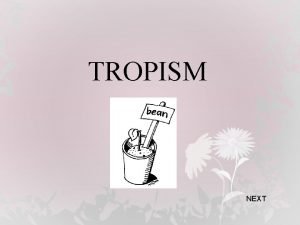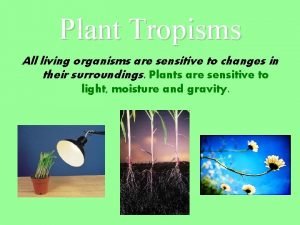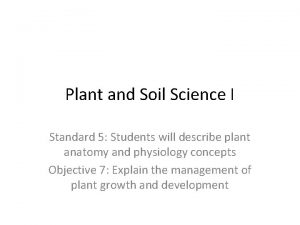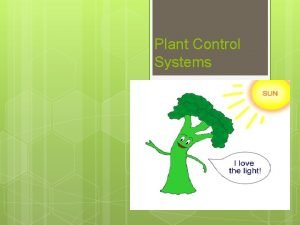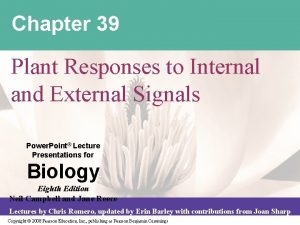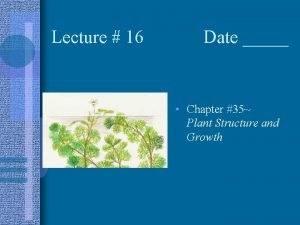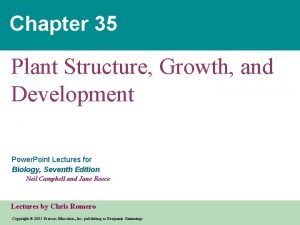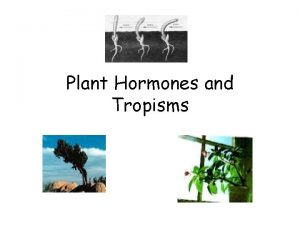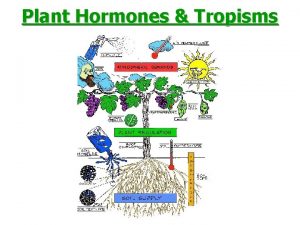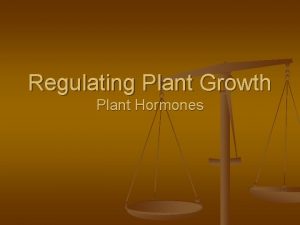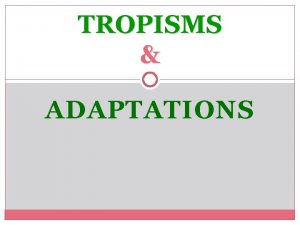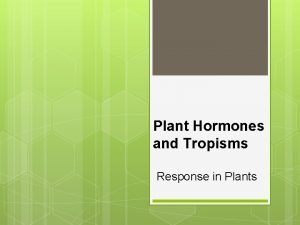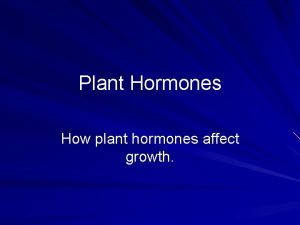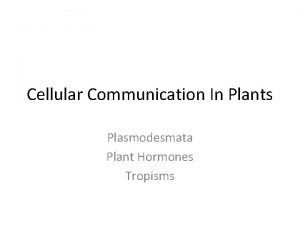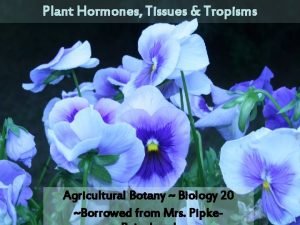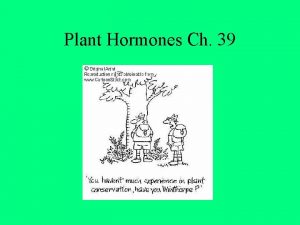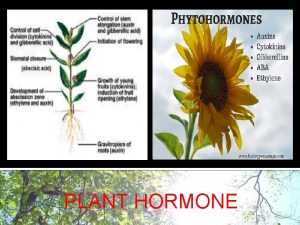Plant growth hormones and tropisms Plant growth hormones

















- Slides: 17

Plant growth, hormones and tropisms

Plant growth, hormones and tropisms Auxins are produced in the tips of shoots and stems, and migrate through the plant elongating the plant.

Plant growth, hormones and tropisms Auxins are produced in the tips of shoots and stems, and migrate through the plant elongating the plant. Dicotyledonous angiosperms grow at the tips of their roots and shoots.

Plant growth, hormones and tropisms Auxins are produced in the tips of shoots and stems, and migrate through the plant elongating the plant. Dicotyledonous angiosperms grow at the tips of their roots and shoots. Meristem cells – found in growing regions and are the cells capable of mitosis.


Auxins are produced in the tips of shoots and stems, and migrate through the plant elongating the plant. Plant growth, hormones and tropisms Dicotyledonous angiosperms grow at the tips of their roots and shoots. Meristem cells – found in growing regions and are the cells capable of mitosis. The newly made cells elongate and gain vacuoles – this causes rapid growth seen in the young root or shoot.

Auxins are produced in the tips of shoots and stems, and migrate through the plant elongating the plant. Plant growth, hormones and tropisms Dicotyledonous angiosperms grow at the tips of their roots and shoots. Meristem cells – found in growing regions and are the cells capable of mitosis. The newly made cells elongate and gain vacuoles – this causes rapid growth seen in the young root or shoot. Specialisation then occurs as the cells differentiate to form tissues such as xylem (for water and mineral transport) phloem (glucose transport)…

Auxins are produced in the tips of shoots and stems, and migrate through the plant elongating the plant. Dicotyledonous angiosperms grow at the tips of their roots and shoots. Plant growth, hormones and tropisms Meristem cells – found in growing regions and are the cells capable of mitosis. The newly made cells elongate and gain vacuoles – this causes rapid growth seen in the young root or shoot. Specialisation then occurs as the cells differentiate to form tissues such as xylem (for water and mineral transport) phloem (glucose transport)… Fibres (support), parenchyma (packing and storage).

Auxins are produced in the tips of shoots and stems, and migrate through the plant elongating the plant. Dicotyledonous angiosperms grow at the tips of their roots and shoots. Meristem cells – found in growing regions and are the cells capable of mitosis. Plant growth, hormones and tropisms The newly made cells elongate and gain vacuoles – this causes rapid growth seen in the young root or shoot. Specialisation then occurs as the cells differentiate to form tissues such as xylem (for water and mineral transport) phloem (glucose transport)… Fibres (support), parenchyma (packing and storage). In roots, the epidermal cells make root hairs that absorb water and minerals.

Plant growth, hormones and tropisms Side branches come off the main stem and leaves develop for photosynthesis.

Plant growth, hormones and tropisms Side branches come off the main stem and leaves develop for photosynthesis. The stem and root may thicken due to cell division in the cambium tissue followed by cell differentiation.


Side branches come off the main stem and leaves develop for photosynthesis. Plant growth, hormones and tropisms The stem and root may thicken due to cell division in the cambium tissue followed by cell differentiation. The mature plant will form flowers for reproduction; after fertilisation, fruit containing seeds form.

Side branches come off the main stem and leaves develop for photosynthesis. Plant growth, hormones and tropisms The stem and root may thicken due to cell division in the cambium tissue followed by cell differentiation. The mature plant will form flowers for reproduction; after fertilisation, fruit containing seeds form. The seeds are then dispersed and continue the life cycle. **Watch in own time** https: //www. youtube. com/watch? v=0 UEpq 1 W 9 C_E

Plant growth, hormones and tropisms Abscission – process of leaf/fruit fall.

Plant growth, hormones and tropisms Abscission – process of leaf/fruit fall. Layers of dead and hard cells at the base of the stalk form so the plant is protected from water loss/entry of pathogens when the leaf/fruit falls.

Abscission – process of leaf/fruit fall. Plant growth, hormones and tropisms Layers of dead and hard cells at the base of the stalk form so the plant is protected from water loss/entry of pathogens when the leaf/fruit falls. Deciduous trees drop all their leaves preventing excess water loss – before the leaves fall, most nutrients and pigments are reabsorbed into the tree.
 Cytokinin function
Cytokinin function Lesson 19: tropisms and photoperiods
Lesson 19: tropisms and photoperiods Sedges adaptations
Sedges adaptations Negative geotropism
Negative geotropism Which tropisms are best illustrated?
Which tropisms are best illustrated? Tropisms
Tropisms Auxin in plants
Auxin in plants Plant hormones and responses
Plant hormones and responses Plant hormones and responses
Plant hormones and responses Plant
Plant Define growth analysis
Define growth analysis Primary growth and secondary growth in plants
Primary growth and secondary growth in plants Primary growth and secondary growth in plants
Primary growth and secondary growth in plants Primary growth and secondary growth in plants
Primary growth and secondary growth in plants Rice flower morphology
Rice flower morphology Chapter 35 plant structure growth and development
Chapter 35 plant structure growth and development Apical meristem
Apical meristem Tronsmo plant pathology and plant diseases download
Tronsmo plant pathology and plant diseases download

